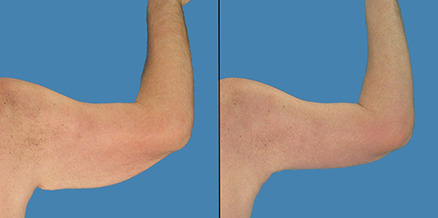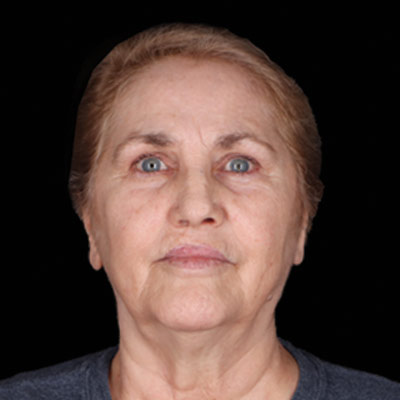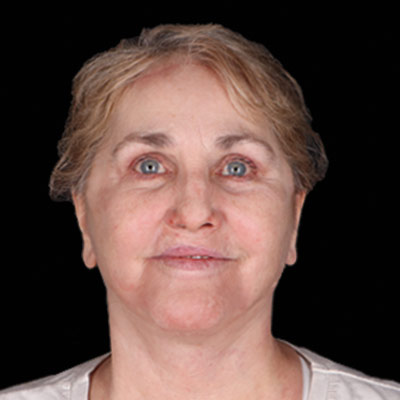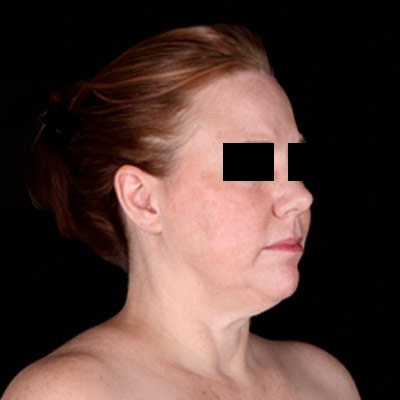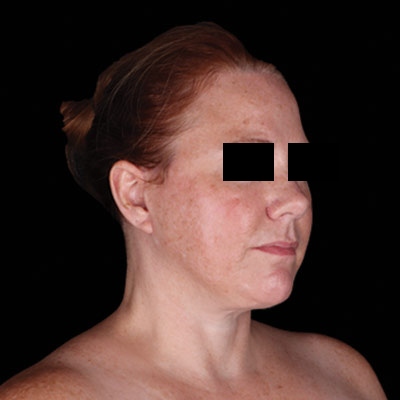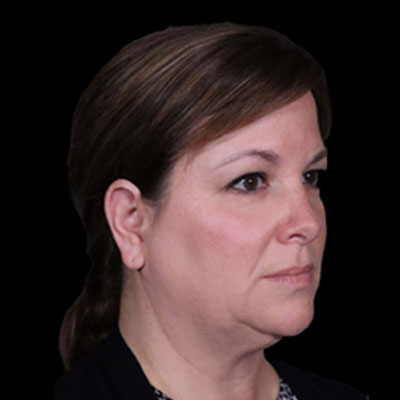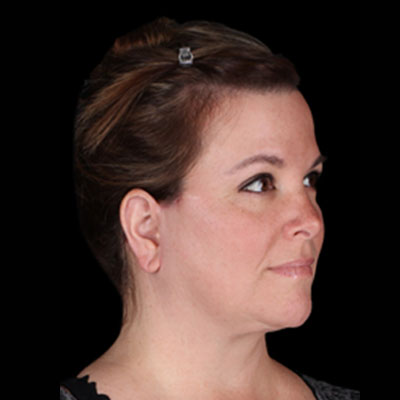Facelift
Consultations offered at our two convenient locations in Houston and Sugar Land, TX

A facelift, also called a rhytidectomy, is a procedure that tightens skin and facial muscles around the lower and middle parts of the face and neck. Depending on the procedure, it only requires an incision around the ears, along the hairline, or both. With the restorative potential of the facelift, you can enhance your natural features while looking young and refreshed.
At Avante Plastic Surgery, we are dedicated to meeting the cosmetic needs of every patient with compassion and individualized care. Dr. Ahmadi is a leading plastic surgeon and researcher in the greater Houston, TX area with over 20 years of experience. As a pioneer of the techniques used in the popular and life-changing LipoTuck™ , Dr. Ahmadi’s attention to detail and expertise in unmatched. To book a consultation or ask about our services, fill out our contact form or give us a call at (281) 265-2639 for our Sugarland and Houston locations.
Contents
- 1 Before and After Photos
- 2 History of the Facelift
- 3 Benefits
- 4 Ideal Candidates
- 5 Personal Consultation
- 6 Preparation
- 7 Types of Facelifts
- 8 Facelift Revision
- 9 Facelift Recovery
- 10 Complementary Procedures
- 11 Cost of a Facelift in Houston, Texas
- 12 FAQ
- 12.1 How long does it take to see results from a facelift?
- 12.2 Can I combine facelift surgery with other procedures?
- 12.3 What are the risks associated with facelift surgery?
- 12.4 Are nonsurgical procedures like dermal fillers or Botox a good alternative to a facelift?
- 12.5 How do I choose the best facelift surgeon for me?
- 12.6 Can a facelift improve sagging skin?
- 12.7 Can facelift surgery improve a double chin?
- 12.8 Does a facelift improve the eye area?
- 12.9 Can I get a facelift if I’m overweight?
- 12.10 How many appointments will I need after a facelift?
- 12.11 Is a facelift painful?
- 13 References
Before and After Photos
History of the Facelift
Research for the facelift began over 100 years ago; according to medical literature, the procedure was successfully completed in 1901! In 1907, Dr. Charles Miller published “The Correction of Featural Imperfections,” which details several procedures designed to improve the cosmetic appearance of the face. This endeavor was largely dismissed at the time, but it was the first American text published on cosmetic surgery and contained primitive procedural steps for performing facelifts, which focused on the removal of lax skin.
In 1976, a major breakthrough occurred in the field of cosmetic surgery. Drs. Mitz and Peyronie discovered the superficial musculoaponeurotic system (SMAS) and how it could be utilized. The SMAS is a layer of facial connective tissues and muscles that can be manipulated to lift the underlying structure of the face, rather than just tightening and removing skin. This important discovery allows today’s facelift to provide longer-lasting results, and to avoid the dreaded “windswept” appearance. (1) And, because less tension is placed on the skin, there is a reduced risk of unwanted changes to the areas around the incision sites, such as the earlobes and hairline. Modern facelift techniques, when performed by a skilled surgeon, ensure that patients can enjoy a revitalized appearance without it being obvious that they’ve “had work done.”
Benefits
Dr. Ahmadi’s extensive experience and surgical skills allow him to perform facelifts and provide consistent, natural-looking results that patients can enjoy for many years. If you think that a facelift is right for you, consider these benefits:
- It contours the jawline and cheeks- eliminating jowls.
- It can be coupled with a neck lift for a more comprehensive treatment.
- It smooths the appearance of nasolabial folds and other lines and wrinkles in the mid-face.
- Because the underlying tissues are carefully adjusted, the results look natural; skin does not look “pulled” back.
- It provides lift to the cheeks and improves the definition of the cheekbones.
- You will enjoy a boost in confidence and a younger, refreshed appearance!
Ideal Candidates

Candidates for facelift procedures are typically in their 40s, 50s, or older, are in good health, and have realistic expectations for what the procedure can accomplish. While facelift surgery can provide dramatic and long-lasting results, it’s important to remember that the effects of facelifts (or revision facelifts) are not permanent. Most patients can expect to enjoy the benefits of a facelift for up to 10 years. However, the natural aging process will continue to affect your skin over time. Maintaining a healthy diet and exercise regimen and protecting your skin from sun damage is important. Patients should be non-smokers or willing to quit for several months before their procedure, and for the duration of their recovery. They should also be free from certain medical conditions that affect the healing process. There are several different types of facelift techniques that Dr. Ahmadi performs, and during your personal consultation, he’ll be able to determine which approach is appropriate based on the extent of the signs of aging that you wish to address, and the quality of your skin and underlying facial tissues. For example, those with mild or moderate signs of aging and skin descent, and sufficient fatty tissue may be good candidates for a mini-facelift, which is less invasive, utilizes shorter incisions, and targets the lower face only. Those with more advanced signs of aging may be better candidates for a full facelift or a deep plane facelift, which addresses a larger area of the face and neck. (3)
Personal Consultation
The first step to getting a facelift in Houston is to schedule a consultation at Avante Plastic Surgery. Our highly trained team supports patients to ensure a successful treatment journey.
Dr. Ahmadi will evaluate your needs, goals, and your unique facial structure and features. A review of your medical history and any previous surgeries will be done to ensure you are a good candidate for facial surgery, or whether you will be better served by nonsurgical facelift options. During your facelift consultation, Dr. Ahmadi will also want to know if you have high blood pressure and your current medications. He will perform a physical examination of your unique facial features, including skin quality, skin laxity, soft tissue, sagging jowls, and neck muscles.
If you are a good candidate, Dr. Ahmadi will discuss what a surgical facelift and neck lift involves, as well as the pros and cons of the latest surgical techniques. Your custom treatment plan may include a mini facelift, classic facelift, SMAS facelift, deep plane facelift, cheek lift, or neck lift. Dr. Ahmadi will also show you the various facelift incisions and where your surgical scars will be placed. Often, a few small incisions are less obvious than one long incision. The aesthetic goal is to give you a youthful contour and a rejuvenated appearance. A ‘pulled look’ must be avoided. And finally, the staff will discuss the facelift cost in detail with you. Every procedure begins with clearly expressing the aesthetic vision you have to Dr. Ahmadi. To get started and schedule your personal consultation, call our offices in Sugarland, TX, or Houston at (281) 265-2639 or fill out our online contact form today.
Preparation
Dr. Ahmadi will provide detailed instructions on preparing for your surgery or procedure. This may include stopping certain medications in the days leading up to the procedure. He may also order testing to ensure that you can undergo surgery safely.
Since smoking affects the circulatory system and can impede healing, you will need to quit 4 to 6 weeks before your surgery. Leading up to your procedure, Dr. Ahmadi will recommend that you limit sun exposure and use a sunscreen of SPF 30 or more. Any sun damage to your face can affect the way you heal and the quality of your results. Increasing your moisturizing regimen leading up to your procedure will ensure that your skin is in good health, and that lines and wrinkles are smoothed as much as possible.
You’ll need to make arrangements for someone to pick you up once your surgery is complete, as you will not be able to drive yourself. On the day before your facelift, you can wash your hair, but you should avoid using dyes, sprays, or styling gels. On the procedure date, arrive with a clean face that is free of makeup and moisturizer. Make sure that you wear comfortable clothing, and a shirt with buttons or a zipper to make getting dressed easier after your surgery.
Types of Facelifts
During your consultation, you and Dr. Ahmadi will have determined the type of facelift that best suits your needs and the appropriate form of anesthesia. Facelifts can be performed under general anesthesia or local anesthesia with IV sedation. Facelift surgery generally takes around two to four hours to complete, but depends on the extent of the procedure.
During a facelift, discrete incisions are made that travel from behind the ear upwards around the earlobe and remain concealed in the contours of the ear along the side of the face. Depending on the type of facelift, they can continue into the sideburn and upwards into the scalp, hidden behind the hairline. The skin is lifted to allow Dr. Ahmadi access the underlying tissues, the SMAS, and sutures are strategically placed to lift and tighten this layer of tissues. Facial fat can also be repositioned or removed before the skin is carefully redraped, and any excess skin trimmed away before the incisions are closed.(2)
Mini-Facelift

Also nicknamed the “weekend facelift,” a limited incision or short scar facelift, is a cosmetic surgery that is a less invasive alternative to a traditional facelift. It only addresses the lower parts of the face, and so the incisions are shorter than those required for the full facelift and are only placed around the lower ears. This variation is an effective way to eliminate jowls, accentuate the jawline, and smooth the lower half of the face. This procedure is perfect for younger patients in their 30s or 40s who are only experiencing mild sagging in the lower face. A mini facelift procedure typically involves a quicker recovery time than a traditional facelift and can be done using local anesthesia and sedation.
Deep Plane Facelift

A Deep Plane Facelift requires the dissection of the facial plane just below the superficial muscular aponeurotic system (SMAS) of the midface. This technique allows for the focused removal of certain key facial retaining ligaments and maximizes mobilization of the superficial soft tissue. Dr. Ahmadi will place tension at strategic points to create tension-free skin with very long-lasting results. The procedure will also tighten the underlying muscle and lift the deeper tissues. This technique can also address buccal fat that contributes to jowling. When performed properly, a deep plane facelift can produce dramatic and sustainable rejuvenation results to the midface and the lower portion of your face.
Facelift Revision
In very rare instances, a facelift procedure may not always go as planned. When this happens, it may feel like you’ve wasted not only your time but also your money.
Some reasons that patients may seek a Revisional Facelift include:
- Bad asymmetry: This can occur due to inadequate deeper ligament release. An aggressive central neck fat reduction without a deeper structure intervention can create a “cobra-neck” deformity and an unnatural appearance of the upper neck.
- The direction of lift: When a facelift is performed incorrectly, your face can look “windswept” or too tight. If some of the deeper ligaments remain unreleased, it produces a bulging lateral sweep deformity, which tends to look worse when smiling or making any sort of animated facial movements.
- Poor planning: Rarely, some plastic surgeons fail to properly plan out the incision lines which can create scarring that runs vertically into the hair in front of the ear limiting vertical vector lift and risking amputation of the sideburns. This can look unnatural and leave an unsightly triangular notch.
- Skin Tension Deformities: These tend to manifest around the incisions and lead to widened and/or thicker scars. Other signs include earlobe distortion and lengthening (also called pixie ear deformity) and loss of tragal cartilage definition.
Thankfully, you don’t have to be stuck with work that you’re not pleased. Dr. Ahmadi offers Facelift Revision surgery to his Houston area patients to help right someone else’s wrong. While a revision facelift is a more technically challenging and invasive procedure, when you have the skilled and experienced hands of a plastic surgeon like Dr. Ahmadi, you will be able to live your life with the face that you want and excellent facelift results.
Facelift Recovery
Dr. Ahmadi will provide detailed instructions on how to care for the treated area. He will guide you in managing pain, swelling, and bruising. He will also order a prescription medication or approve certain over-the-counter medications so that you’ll be able to handle discomfort after the anesthesia wears off. Drains are necessary for the facelift procedure to minimize swelling. Drains also minimize bruising. They typically come out within 1-2 days. Carefully following Dr. Ahmadi’s steps toward recovery are conducive to the best results possible. You will need to keep your surgical bandages on until the following day’s appointment. Dr. Ahmadi will supply you with a chin and head strap to support your healing and prevent significant scarring. You should expect to experience mild bruising, numbness, and swelling for a few days. The time it takes to return to work after a facelift surgery depends on the extent of the procedure and your healing process. Patients expect to take at least a week off work to recover from the surgery. For more complex facelift procedures or patients with physically demanding jobs, it may be necessary to take additional time off. The scars from a facelift are very subtle and hidden within the hairline and around the ears. Even still, scar treatments like silicone gel sheets, Vitamin E, scar gels, and proper nutrition can be advantageous for the health of your skin post-surgery.
Complementary Procedures
A neck lift is a procedure that only focuses on reducing “turkey neck” or the appearance of a “double chin”. It is often paired with a facelift to complete the desired look. A neck lift can lift the sagging skin and tighten the neck muscle (platysma muscle). Lax skin and deep wrinkles are part of how the face ages and our neck is an extension of that. By tightening underlying muscles in the face and neck, a neck lift will have a lasting impression and greatly benefit the overall appearance.
Liposuction can be used as a minimally invasive alternative to a neck lift. Using ultrasound-assisted liposuction, fat deposits in the neck and chin can be liquified and suctioned out with precision.
Laser skin resurfacing utilizes ablative lasers to encourage the production of collagen and restore more youthful-looking skin. Laser treatments can be performed after a facelift or neck lift procedure to address uneven texture, pigmentation concerns, and provide additional tightening to extend the results of surgical procedures.
A buccal fat pad removal can be performed in order to highlight a patient’s cheekbones and jawline. With just two small incisions within the cheek, buccal fat can be accessed and removed, promoting a chiseled, model-like facial structure.
A chemical peel is a type of skin resurfacing procedure to reduce the appearance of scars, wrinkles, age spots, and uneven skin tone. The acidic solution works to remove the damaged topmost layer of the skin and stimulate collagen production. Collagen is a protein found within the skin that plays a crucial role in maintaining its rigidity and elasticity, so chemical peels can be an incredibly useful aid in helping your skin stay young and healthy.
A brow lift not only focuses on the brows, but it compliments your face as a whole. With just subtle incisions in the hairline, a brow lift can raise your forehead skin, eliminate frown lines and give you a naturally more alert and youthful look.
A blepharoplasty targets sagging skin of the upper and lower eyelids. As aging occurs, fat may also develop more in this area. This eyelid surgery will help you look more awake and refreshed; it can improve a patient’s vision as well.
Cost of a Facelift in Houston, Texas
While Dr. Ahmadi wants to provide the best, most affordable care possible, a facelift is a complex procedure that requires a thorough consultation beforehand. His staff will be able to provide you with an accurate estimate for the cost of your facelift following your consultation.
FAQ
How long does it take to see results from a facelift?
While some results may be visible immediately after the procedure, the final results can take several weeks or months to become apparent. As the swelling and bruising subside, the treated area will look more natural and youthful.
Can I combine facelift surgery with other procedures?
Many patients choose to combine other facial enhancements with complementary procedures, such as eyelid surgery (eyelid lift), fat transfer, a brow lift, or neck surgery to achieve a better profile. Even non-surgical treatments such as Botox can help you gain a more youthful appearance. If you have any specific desires or would like to hear your options, please mention them during your consultation and your surgeon will be able to offer expert recommendations to help you achieve your aesthetic goals.
What are the risks associated with facelift surgery?
As with any surgical procedure, there are some risks associated with a facelift. These include bleeding, infection, scarring, temporary loss of skin sensation, and facial nerve injury. However, these risks can be minimized by choosing an experienced surgeon. Also, be sure to follow all pre-and post-operative instructions. Take good care of yourself during your recovery.
Are nonsurgical procedures like dermal fillers or Botox a good alternative to a facelift?
Nonsurgical procedures can be a good alternative to facelift surgery for some patients. These treatments can reduce the appearance of wrinkles. They can also enhance facial contours without surgery. However, the results of these procedures are typically temporary. They need to be repeated to maintain the desired effect. Alternatively, these nonsurgical modalities can be used to enhance cosmetic surgery.
There are many non-surgical alternatives to a facelift. These include dermal fillers, Botox, Xeomin, and Dysport. These treatments can be used to reduce the appearance of wrinkles and fine lines, add volume to the face, and enhance facial contours without the need for surgery.
Another popular treatment is a liquid facelift (non-surgical facelift). This is with the use of dermal fillers and threads.
How do I choose the best facelift surgeon for me?
Choosing a facelift surgeon involves research and careful consideration. Look for a surgeon who is board-certified, experienced, and has a good reputation in the community. You should also feel comfortable with the surgeon and their team and feel that they are listening to your concerns and answering your questions thoroughly and professionally.
Can a facelift improve sagging skin?
Facelift surgery is a plastic surgery in which excess skin is removed and facial tissues are tightened. If done by a board-certified plastic surgeon who specializes in facial plastic surgery, facelift surgeries can be an effective way to achieve a smoother, firmer, rejuvenated appearance. Depending on the facelift techniques, the surgeon will tighten the excess skin on the face and the neck while removing excess skin. The goal of the surgery is to enhance the patient’s natural facial qualities.
Can facelift surgery improve a double chin?
A neck lift is often combined with facelift surgery and can define the neck contours to improve a double chin. Oftentimes, an aging neck can cause a “turkey neck” appearance. With a neck lift and facelift surgery, the face and neck are both positively impacted.
Does a facelift improve the eye area?
Cosmetic procedures such as eyelid surgery (eyelid lift) can be combined with a facelift. During your consultation, your surgeon will create a custom treatment plan that will include eyelid surgery if the under or lower eyelids also need attention. Just as a neck lift is typically part of the overall surgery, so is eyelid surgery. Eyelid surgery is usually broken up between lower eyelid surgery and upper eyelid surgery. Lower eyelid surgery addresses bags under the eyes, whereas upper eyelid surgery will address drooping upper eyelids.
Can I get a facelift if I’m overweight?
Our Facelift Houston patients should be close to their ideal weight before getting a facelift or any other procedure. Weight loss after a facelift can have a negative impact on the results. It may be possible to get the surgery if your BMI is within a certain range, but you’ll need to consult with your plastic surgeon.
How many appointments will I need after a facelift?
Your surgeon will want to see you for your first post-operative appointment a day or two after surgery to remove any dressing and observe your initial recovery, followed by another visit approximately one week after facelift surgery to remove the sutures. You will then need to follow-up up one month after surgery and usually every few months up to six months after your surgery to monitor your healing and ensure your satisfaction with the results.
Is a facelift painful?
Most patients experience some discomfort and swelling after facelift surgeries. However, most patients say this can be managed with pain medication and other techniques. Your surgical team will provide detailed instructions on managing pain and discomfort during recovery.
References
- Barrett DM, Casanueva FJ, Wang TD. Evolution of the rhytidectomy. World Journal of Otorhinolaryngology – Head and Neck Surgery. 2016;2(1):38-44. doi:https://doi.org/10.1016/j.wjorl.2015.12.001
- Rammos, C.K., Mohan, A.T., Maricevich, M.A. et al. Is the SMAS Flap Facelift Safe? A Comparison of Complications Between the Sub-SMAS Approach Versus the Subcutaneous Approach With or Without SMAS Plication in Aesthetic Rhytidectomy at an Academic Institution. Aesth Plast Surg 39, 870–876 (2015). https://doi.org/10.1007/s00266-015-0558-9
- Plane Facelift/Rhytidectomy. Facial Plastic Surgery. 2020;36(04):376-385. doi:https://doi.org/10.1055/s-0040-1714118
- Sundine MJ, Kretsis V, Connell BF. Longevity of SMAS facial rejuvenation and support. Plast Reconstr Surg. 2010;126(1):229-237. doi:10.1097/PRS.0b013e3181ce1806



